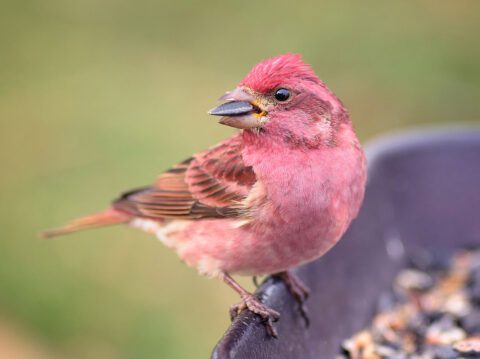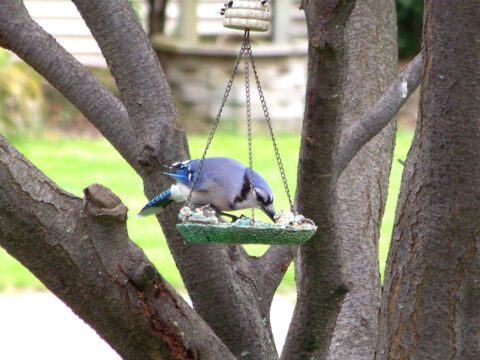Bare-faced Bulbul: A New Species Discovered in Laos
By Hugh Powell
July 30, 2009In the dry limestone scrub of central Laos a remarkable bird lived unnoticed, even by locals, until late last year. That’s when a team from University of Melbourne and the Wildlife Conservation Society discovered a group of Bare-faced Bulbuls—assertive, thrush-sized songbirds with pink heads, devoid of feathers except for a fuzzy, mohawk-ish line along the skull. The birds were traveling through low trees and eating figs and berries in the heat of the day.
The unnoticed part isn’t quite true. Thirteen years earlier and 100 miles to the northwest, one of the same researchers had glimpsed a flock of similar bare-headed birds for just a few seconds. Owing to the sighting’s “brevity and gross-level incompatibility with any known form,” the researcher, RJ Timmins, left the sighting out of his official trip report. In their paper describing the new species (in Forktail, the journal of the Oriental Bird Club), the authors note rather endearingly that Timmins “subsequently weathered a fair amount of good-natured ribbing on relating the sighting to sceptical colleagues.”
The birds seen last year were near a populated area at the edge of Laos’s hilly limestone karst country, a vast and nearly impenetrable region that stretches across central Laos between Thailand and Vietnam. Yet locals didn’t recognize the bird when scientists showed them specimens—perhaps because the birds are restricted to very dry, rocky areas with stunted trees, little used for farming, hunting, or keeping livestock. If the Bare-faced Bulbul is restricted to these very dry areas, the researchers wrote, it could prove to be Laos’s first known endemic bird.
Mainstream news loves this story largely because the bird is so weird looking (some say ugly, but we won’t go that far), and because it’s the only bald songbird known from Asia. What makes birds evolve baldness? The thinking for vultures is that baldness avoids all the mess and fuss associated with repeatedly sticking your head into a rotting carcass – not a likely explanation for a robin-sized bird that eats fruit. The researchers note that many other bulbuls show some skin on the face, perhaps for use in displays. They suggest the Bare-faced Bulbul may be an extreme development of this trait.
Still, it got me thinking about bald songbirds elsewhere in the world. All I could come up with was the lovely Ocellated Antbird and a few relatives from the tropics—and they’re not even completely bald. Can you think of any I’ve missed?
(By the way, you might see bald birds like Northern Cardinals and Blue Jays at your feeders from time to time – but they don’t really count. Though they are really weird looking, they’re going through a molt and will soon grow those feathers and look normal again—this is one of our most frequent frequently asked questions in fall.)
From the paper “An unusual new bulbul from the limestone karst of Lao PDR” in Forktail, August 2009, by IA Woxvold, JW Duckworth, and RJ TImmins.

All About Birds
is a free resource
Available for everyone,
funded by donors like you
American Kestrel by Blair Dudeck / Macaulay Library



